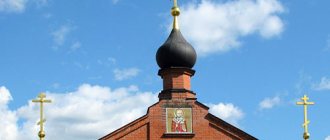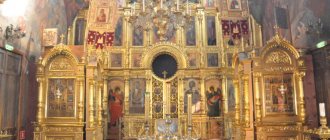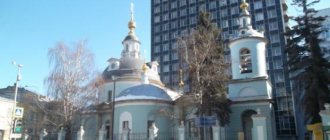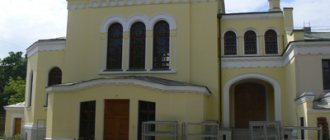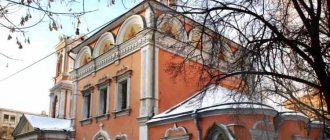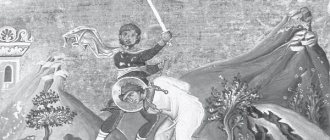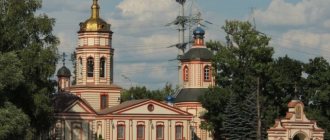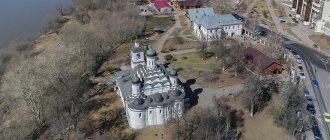Mir
Russia Moscow Epiphany Monastery (Moscow) Map is loading…
{"format":"leaflet","minzoom":false,"maxzoom":false,"limit":50,"offset":0,"link":"all","sort":[""], "order":[],"headers":"show","mainlabel":"","intro":"","outro":"","searchlabel":"\u2026 \u0441\u043b\u0435\ u0434\u0443\u044e\u0449\u0438\u0435 \u0440\u0435\u0437\u0443\u043b\u044c\u0442\u0430\u0442\u044b","default":"","import-annotation":false,"width ":"auto","height":"350px","centre":{"text":"","title":"""link":"""lat":55.75586100000000300269675790332257747650146484375,"lon": 37.62322199999999838837538845837116241455078125,"icon":""},"title":"","label":"","icon":"","lines":[],"polygons":[],"circles":[ ],"rectangles":[],"copycoords":false,"static":false,"zoom":8,"defzoom":14,"layers":["OpenStreetMap"],"image layers":[] ,"overlays":[],"resizable":false,"fullscreen":true,"scrollwheelzoom":true,"cluster":false,"clustermaxzoom":9,"clusterzoomonclick":true,"clustermaxradius":80, "clusterspiderfy":true,"geojson":"","clicktarget":"","showtitle":true,"hidenamespace":false,"template":"","userparam":"","activeicon": "","pagelabel":false,"ajaxcoordproperty":"","ajaxquery":"","locations":[{"text":"\u003Cb\u003E\u003Ca href=\"/palomnik/%D0% 91%D0%BE%D0%B3%D0%BE%D1%8F%D0%B2%D0%BB%D0%B5%D0%BD%D1%81%D0%BA%D0%B8%D0%B9_% D0%BC%D1%83%D0%B6%D1%81%D0%BA%D0%BE%D0%B9_%D0%BC%D0%BE%D0%BD%D0%B0%D1%81%D1% 82%D1%8B%D1%80%D1%8C_(%D0%9C%D0%BE%D1%81%D0%BA%D0%B2%D0%B0)\» title=\»\u0411\u043e\ u0433\u043e\u044f\u0432\u043b\u0435\u043d\u0441\u043a\u0438\u0439 \u043c\u0443\u0436\u0441\u043a\u043e\u0439 \u043c\u043e\u0 43d\u0430\u0441\u0442\u044b\ u0440\u044c (\u041c\u043e\u0441\u043a\u0432\u0430)\»\u003E\u0411\u043e\u0433\u043e\u044f\u0432\u043b\u0435\u043d\u0441\u043a\ u0438\u0439\u043c\ u0443\u0436\u0441\u043a\u043e\u0439 \u043c\u043e\u043d\u0430\u0441\u0442\u044b\u0440\u044c (\u041c\u043e\u0441\u043a\u0432\u0 430)\u003C/a\u003E\ u003C/b\u003E\u003Chr /\u003E\u003Ca href=\"/palomnik/%D0%A1%D0%B2%D0%BE%D0%B9%D1%81%D1%82%D0%B2%D0% BE:%D0%90%D0%BD%D0%BD%D0%BE%D1%82%D0%B0%D1%86%D0%B8%D1%8F\» title=\»\u0421\u0432\u043e \u0439\u0441\u0442\u0432\u043e:\u0410\u043d\u043d\u043e\u0442\u0430\u0446\u0438\u044f\»\u003E\u0410\u043d\u043d\u043e\u0442 \u0430\u0446\u0438\ u044f\u003C/a\u003E: \u043e\u0441\u043d\u043e\u0432\u0430\u043d \u043a\u043d\u044f\u0437\u0435\u043c \u0414\u0430\u043d\u043 8\u0438\u043b\u043e\u043c XIII \u0432\u0435\u043a\u04 30,\u0432 1296\u0433\u043e\ u0434\u0443.","title":"\u0411\u043e\u0433\u043e\u044f\u0432\u043b\u0435\u043d\u0441\u043a\u0438\u0439 \u043c\u0443\u0436\u0441\u0 43a\u043e\ u0439 \u043c\u043e\u043d\u0430\u0441\u0442\u044b\u0440\u044c (\u041c\u043e\u0441\u043a\u0432\u0430)","link":"","lat":55.755861000000 00300269675790332257747650146484375,”lon ":37.62322199999999838837538845837116241455078125,"icon":""}],,"imageLayers":[]}
55.755834; 37.623097
Russia, Moscow, Bogoyavlensky lane, 2с4
Moscow
Russia
Telephone:
+7 495 698 38 25
Epiphany Monastery
founded by Prince Daniil of Moscow at the end of the 13th century, in 1296.
History[edit]
In the center of Moscow, not far from Red Square, on Bogoyavlensky Lane, rises the pillar-shaped cathedral Church of the Epiphany of the former Epiphany Monastery. Dominating the Kitaygorod buildings, it attracts the attention of passers-by with its elegant decorations, cornices, balusters and columns, large icons in the central apse and octagon. However, under the richness of the patterns there is a certain secret hidden. The answer lies in the history of the Epiphany Monastery, which suffered numerous fires, devastation by the Tatars in 1382, the Poles in 1612, the French in 1812 and the Soviet authorities during 1919-1929, the closure and destruction of monastery buildings and a new revival in the person of the parish Church of the Epiphany The Lord's. The name of this mystery is God's presence and God's mercy towards this holy place.
Back in the 19th century, the manager of the monastery, later Bishop of Dmitrov Nikodim (Belokurov), wrote: “Let there be glory and thanksgiving to the Lord, who has preserved this monastery for such a long time! For “except the Lord build the house, those who build it labor in vain; Unless the Lord preserves the city, it will be in vain" (Ps. 127:1)." His contemporary, the confessor of the monastery, Hieromonk Panteleimon, repeated this thought: “During the almost six-century existence of this monastery, it was destined, like a light boat in a stormy sea, to sink into the waves, then rise again among them, and God’s Providence has hitherto preserved this monastery not only from final destruction, but even from temporary abolition, exalting it more than many other monasteries of this capital city. Blessed be God who favors tacos!”
XIII-XVI centuries
The Epiphany Monastery was founded by Moscow Prince Daniil Alexandrovich at the end of the 13th century and was built of wood. According to legend, one of the abbots of the monastery was Stefan, the elder brother of St. Sergius of Radonezh. The future Metropolitan Alexy took monastic vows here in 1313.
The wooden cathedral, erected with the foundation of the monastery, fell into disrepair and suffered from fires. In 1342 it was rebuilt in stone with donations from the boyar Protasius. It was a one-domed, four-pillared temple with three apses. Its width did not exceed 11.5 meters, and its length - 17.5 meters. The facades were divided into three parts by thin blades; two ribbons of white stone carvings ran across them. The foundation, pillars and soles have been preserved under the quadrangle of modern construction. The style of the temple was close to the Trinity Cathedral of the Sergius Monastery.
The monastery burned twice more: in 1451 during the invasion of the Horde prince Mazovsha and during the Moscow fire in 1547. For the first time, the damage was restored with the help of Grand Duke Vasily II and a refectory was erected. The monastery was renovated for the second time during the reign of Ivan the Terrible after the campaign of the Crimean Khan Devlet-Girey against Moscow in 1571. At the end of the 16th century, several courtyards in Kolomenskoye came into the possession of the monastery.
XVII-XVIII centuries
During the Time of Troubles, the Epiphany Monastery found itself at the center of the battles for Kitay-Gorod in 1611-1612, because of which it was looted and burned. In 1624, under Mikhail Fedorovich, a new stone cathedral was built. Boyar Ksenia Repnina, the niece of Prince Yuri Buinosov-Rostovsky, donated a courtyard on Nikolskaya Street to the monastery in 1672. A gate with the gatehouse Church of the Nativity of John the Baptist was erected on it. The monastery was divided into two parts: in the south there was a cathedral church, abbot's chambers and fraternal cells, in the north there were utility rooms.
In 1685, the Epiphany School was opened at the monastery. It was headed by the Greek monks Ioannikis and Sophronius Likhud. The students were children from the common people and from the highest aristocratic families. The duration of training was about fifteen years. Two years after opening, more than 180 people were studying at the school. In 1687, it was merged with the school of Simeon of Polotsk and transferred to a building at the neighboring Zaikonospassky Monastery. At the new location, the institution was renamed the Slavic-Greek-Latin Academy, and subsequently transformed into the Moscow Theological Academy.
At the end of the 17th century, the monastery was rebuilt in the Naryshkin Baroque style. After the construction of new cells in 1692, with the blessing of Patriarch Adrian, the construction of a new cathedral began, which has survived to this day. It was built with the money of Natalia Naryshkina, the mother of Peter I, and the funds of the princes Golitsyn and Dolgorukov. The miraculous Kazan icon, which was in the militia of Minin and Pozharsky during the Time of Troubles, was transferred to it. The lower church in the name of the Kazan Icon of the Mother of God was consecrated in December 1693, the upper church in honor of the Epiphany - in 1696. A year later, a chapel was created in it in honor of St. Alexis. In 1705, the upper church was decorated with stucco bas-reliefs in the Italian style, made by craftsmen from Switzerland under the direction of the architect Giovanni Mario Fontana: “The Coronation of the Mother of God,” “The Nativity of Christ,” and “The Epiphany.” According to another version, the work manager was Giovanni Francesco Rossi.
In 1739, in the building of the bell tower, which was damaged by the Trinity fire and restored, a chapel was built in the name of the holy passion-bearers Boris and Gleb, which was later renovated and consecrated in honor of the Savior Not Made by Hands. Early funeral masses were celebrated there in the summer.
In the middle of the 18th century, at the expense of the Dolgorukov princes, two chapels were built in the cathedral: in honor of the Great Martyr George the Victorious, erected in 1747, and in the name of the Holy Apostle James Alfeyev, created in 1754. The latter was later abolished and used as a sacristy, and around 1900 it was consecrated in the name of Theodosius of Chernigov. In 1764, the monastic lands were secularized. In 1782, the gate church was repaired, painted and decorated with stucco.
XIX-XX centuries
Before the French troops entered Moscow, Archimandrite Gideon removed the sacristy from the monastery and hid the remaining valuables in the wall of the church. Before the army retreated, on the orders of Napoleon, an attempt was made to undermine the Kremlin. During the explosion in the Epiphany Cathedral, shrapnel pierced the brick roof, windows were broken, and the cross on the bell tower was bent. The temple was repaired and re-consecrated in 1813.
In 1867, shrines from the Russian Panteleimon Monastery on Athos were exhibited in the cathedral for veneration: the icon of the Mother of God “Quick to Hear,” the relics of the Great Martyr Panteleimon, a cross with a particle of the Life-Giving Tree, a piece from the stone of the Holy Sepulcher. In 1873, a chapel was built in the temple in the name of St. Panteleimon and the Athos Chapel was built. In 1880 it was rebuilt according to the design of the architect Alexander Kaminsky.
Despite protests from the Moscow Archaeological Society, the gate church of the Nativity of John the Baptist was demolished in 1905. In its place, an apartment building was built, and a chapel of the same name was built in the temple.
After the February Revolution of 1917, the monastery was the residence of Bishop Joasaph (Kallistov), who was appointed administrator of the Moscow diocese. The monastery was closed in 1919, but the parish community continued to live on its territory. In 1922, during the Civil War, church valuables were confiscated from the church for the famine relief fund. In 1929, its inhabitants were evicted from the monastery; later the bell tower, the tower of the monastery fence of the 17th century, the Alexievsky chapel and other buildings were dismantled. At various times, the premises of the monastery housed a flour warehouse, a dormitory for students of the Mining Academy, a manufacturing enterprise and other organizations.
During the Great Patriotic War in 1941, a downed bomber fell near the monastery. The buildings standing on that site were completely destroyed, and the blast wave destroyed the upper part of the temple. After the end of the war, the administrative building of the People's Commissariat of Internal Affairs was built on the territory of the monastery. After 1980s
In 1982, the Epiphany Cathedral was transferred to the State Academic Russian Choir named after Sveshnikov. At the request of the directorate, the Spetsproektrestavratsiya scientific research institute prepared a project for the restoration of the cathedral. Along with the restoration, archaeological work was also carried out under the leadership of Leonid Belyaev and N.P. Pakhomov. They managed to discover cultural layers dating back to the 13th century, fragments of walls and pillars of the 14th century.
The Moscow Epiphany Monastery was founded by the holy noble prince Daniil Alexandrovich
The Moscow Epiphany Cathedral was founded by the holy noble prince Daniil Alexandrovich.
1296
year of foundation of the Epiphany Monastery
A copy of the book of monastic acts indicates that the Epiphany monastery was founded in 1296.
Historians say that, most likely, this happened simultaneously with the founding of the Danilov Monastery.
Prince of Moscow Daniil Alexandrovich (1278 - 1303). Portrait from the "Titular Book" 1672. The Holy Blessed Prince Daniil Alexandrovich is considered the founder of the Moscow Epiphany Monastery
In 1298 - 1299, the first Moscow prince began to strengthen the southern borders of the principality. The reason for this was the invasion of the Duden Army.
As part of the fortification work aimed at protecting the road to the Kremlin, the Danilovskaya and Epiphany monasteries were erected.
The construction of the Moscow Epiphany Cathedral began after the invasion of Moscow by the “Dedyuneva Army”.
For this, the holy noble prince received the blessing of St. Maxim, Metropolitan of Kyiv and all Rus'.
Initially the monastery was built of wood. In addition, at the same time, in the middle of Posad, on a hill, a wooden temple was built in honor of the Epiphany of the Lord.
The temple had a chapel in honor of the Annunciation of the Blessed Virgin Mary and a cell.
“Defense of Moscow from Khan Tokhtamysh. XIV century." A.M. Vasnetsov. 1918 Moscow Epiphany Cathedral, part of the monastery complex, is the largest cathedral of Moscow Posad in the Middle Ages
Since the main entrance to the monastery was on the western side, where the trading took place, at first the monastery was popularly called “what is behind the trading”. Later they began to call it “what’s behind Vetoshny Row”, since in the shopping row located next to the monastery they sold old fabrics.
The life of the Epiphany Monastery was organized according to the Kelliot especial life charter. Tradition says that one of the first abbots of the monastery was the elder brother of St. Sergius of Radonezh, Stefan.
Current state[edit]
In 1991, the main church of the monastery was returned to the Russian Orthodox Church and services were resumed. In the same year, the chapel was consecrated in honor of St. Alexis of Moscow. In 1992, the side throne was consecrated in the name of the Hieromartyr Vladimir of Kyiv. Over time, the multi-tiered iconostasis, stucco molding, sculptures, and the Royal Doors were restored in the upper church. In 1993, two more churches were assigned to the Epiphany Cathedral - in honor of St. Nicholas "Red Bell" and the Church of Cosmas and Damian in Starye Panekh, and in 1994 - a chapel in honor of the Iveron Icon of the Most Holy Theotokos at the Resurrection Gate. In 1995, a teacher’s seminary was opened at the monastery to train social educators. Later it was transformed into the Regency Singing Seminary, which existed until 2012.
Of the monastery buildings, as of 2022, the Cathedral of the Epiphany with a bell tower, the lower church in honor of the Kazan Icon of the Mother of God, fraternal cells and abbots’ chambers have been preserved. The cathedral is decorated with three white stone portals five meters high. The facades are decorated with carvings and window frames. The refectory and the quadrangle are connected by a wide gallery. The interiors feature paintings, mosaics, ceramics, and sculptural compositions on mythological subjects. The Royal Doors are made in the form of a cross, and in its center is the image of the Annunciation. Near the fence of the cathedral there is a monument to the Likhud brothers, erected in May 2007. In 2011, the main altar of the lower church was consecrated in honor of the Kazan Icon of the Mother of God.
Ascribed temples[edit]
- Chapel of the Iveron Icon of the Mother of God at the Resurrection Gate
- Church of St. Nicholas of Myra "Red Bell"
- Temple of the unmercenary saints Cosmas and Damian - in Starye Panekh
Necropolis[edit]
Until the 1930s, in the lower church there was a necropolis with tombs of noble families - the Golitsyns, Sheremetevs, Dolgorukovs, Saltykovs, Romodanovskys, Repnins. In total, it housed more than 150 graves. The tombstones of Mikhail Golitsyn, chief generals Grigory Yusupov and Alexander Menshikov, and senator Alexei Golitsyn were of high artistic value. The tomb of Field Marshal Mikhail Golitsyn, built by the French sculptor Jean-Antoine Houdon in 1765, occupied a place of honor. In 1935, it was moved to the necropolis of the Donskoy Monastery. Most of the monuments of the 18th century are wall tombstones in the Baroque style, made in a planar manner. They are decorated with ribbons, garlands, bouquets, complex fabric draperies and personification figures. In pre-revolutionary publications, their authorship was attributed to leading French masters. In the 1930s, the burial sites were looted. Only the most valuable monuments for historians were transported to the Donskoy Monastery.
Cathedral
In 1931 [2] after the closure of the Assumption Cathedral in the Kremlin and the loss of the Cathedral of Christ the Savior, the Epiphany Cathedral became the cathedral church of the Moscow diocese.
In 1927, the Epiphany Church was deregistered, crossing it off the list of monuments of church architecture under the usual revolutionary pretext - “it has no artistic value,” so no photographs were taken before its demolition. The first rumors about the demolition of the temple began to spread in 1928 - 10 years before its death. In 1929, workers petitioned to close the temple and transfer it to a club, but then their petition was rejected.
Shrines[edit]
- External Cross with a part of the Honest and Life-Giving Tree of the Cross of the Lord
- Reliquary cross with a cathedral icon and particles of the relics of saints: the Apostle and Evangelist Luke, the Apostle Barnabas, St. Basil of Ryazan, St. Mitrophan of Voronezh, St. Agapit the gratuitous physician and Damian the healer of the Kiev-Pechersk, St. Euphrosyne of Suzdal
- Kasperovskaya Icon of the Mother of God with particles of holy relics: Shchmch. Dionysius the Areopagite, Bishop of Athens, St. Innokenty of Irkutsk, military center. Barbarians, St. John Climacus, prmcc. book Elizabeth and nun Varvara, St. bgg. book George Vladimirsky and Prince. Peter and Prince Fevronia Muromsky; and with particles of the Holy Sepulcher, the oak of Mamre and a stone from Mount Golgotha.
- Icons with particles of holy relics: Apostle Andrew the First-Called
- Apostle Barnabas
- VMC. Catherine
- Vmch. Demetrius of Thessalonica
- 14,000 infant martyrs, killed by Herod in Bethlehem
- Right warrior Feodor Ushakov
- Right Martha
- Prmcc. led book Elizabeth and nun Varvara
- St. Alexy Zosimovsky
- St. Aristocleus of the Elder of Moscow
- St. Varlaam of Suzdal
- St. Gabriel of Spain, Melekessky
- St. German Zosimovsky
- St. German Zosimovsky
- St. John Climacus
- St. Job Pochaevsky
- St. Lavrenty Chernigovsky
- St. Maxim Grek
- St. Pimen the Great
- St. Roman Kirzhachsky
- St. Sofia of Suzdal
- St. Stefan Makhrishchsky
- St. Theodore of Sanaksar
- St. Alexander (Orlov) isp., Presbyter of Maccabees
- St. blg. book Oleg Bryansky
- St. blgv. led book Andrey Bogolyubsky
- St. blgv. led book Georgy (Yuri) Vsevolodovich Vladimirsky
- St. blgv. book Alexander Nevsky
- St. blgv. book Daniil of Moscow
- St. blgv. Tsarevich Dimitri, Uglich and Moscow
- St. Blessed Andrey Simbirsky
- St. Blessed Vasily, Christ for the sake of the holy fool, Moscow
- St. VMC. Barbarians
- St. Sergius (Pravdolyubov) isp., presbyter of Kasimovsky
- St. blgv. book Konstantin (Yaroslav) and his children Mikhail and Theodore, Muromsky
- St. blgv. book Peter, in the monasticism of David, and Prince. Fevronia, in monasticism Euphrosyne, Murom miracle workers
- St. blgvv. knn. Theodore of Smolensk and his children David and Konstantin, Yaroslavl
- St. Innocent, bishop Irkutsk
- St. Innocent, Bishop of Penza
- St. Innocent, Metropolitan Moscow
- St. John, Bishop of Suzdal
- St. Luke isp., archbishop. Simferopol
- St. Nikita, recluse of Pechersk, bishop. Novgorodsky
- St. Nicholas, Archbishop of Myra in Lycia
- St. Tikhon, Patriarch of Moscow and All Rus'
- St. Theodora, bishop Suzdal
- St. Theodosius of Chernigov
- St. Feofan, the Recluse of Vyshensky
- St. Philareta, Metropolitan Moscow
- Sschmch. Vladimir, Metropolitan Kievsky and Galitsky
- Sschmch. Dionysius the Areopagite, bishop. Athens
- Sschmch. Sylvester, Archbishop. Omsk
- St. Ilia Muromets, Pechersky
Patronal holidays[edit]
- Epiphany (Epiphany)
- January 19 - Andrew the First-Called, Apostle
- December 13 - Vladimir Epiphany, Hieromartyr
- February 7 - Icon of the Most Holy Theotokos “Kazan”
- July 21, November 4 - Alexy of Moscow, saint, wonderworker
- February 25
How to get there[edit]
Address:
Moscow, Bogoyavlensky lane, 2, building 4
Directions:
The Church of the Epiphany, the former Epiphany Monastery, in Kitai-Gorod is located near the Moscow Kremlin, between Ilyinka and Nikolskaya streets.
- From the metro station “SQUARE OF REVOLUTION”
(Arbatsko-Pokrovskaya line): There are two exits from the station. You need an exit marked with the following sign: “EXIT TO THE CITY: TO RED SQUARE, NIKOLSKAYA, ILYINKA STREETS, CHAMBER MUSICAL THEATER, STORES: GUM, “CHILDREN’S WORLD”, “GOSTINY Dvor”. You go up the escalator, get out of the metro - and right in front of you is a tall, beautiful temple.
- From the KITAY-GOROD metro station
(Kaluzhsko-Rizhskaya or Tagansko-Krasnopresnenskaya lines): At this station two different lines converge. Regardless of which line you arrived on, you need to turn to the exit with the stairs (as opposed to the opposite exit with the escalator) under the sign: “EXIT TO THE CITY: TO NEW SQUARE, STREETS: ILYINKA, MAROSEYKA, POLYTECHNIC MUSEUM, GOSTINY Dvor” . Go up the stairs, turn left and go to the escalator. Having taken the escalator and exited the station, you find yourself in a long passage - you need to turn left and walk to the end, then go up the right exit to the street. Ilyinka Street begins right next to the metro exit. You need to follow it to Bogoyavlensky Lane. He will be second on the right side. Landmarks: Exchange Square, Gostiny Dvor (corner large blue building), apricot-colored building of the Chamber of Commerce and Industry of the Russian Federation. Turning right into Bogoyavlensky Lane, you will immediately see the golden dome of the temple.
- From the metro station “LUBYANKA”
(Sokolnicheskaya line): Having arrived at the station, go to the exit indicated by the sign: “EXIT TO THE CITY: AT THE SQUARE: LUBIANSKAYA, NOVAYA, TO THEATER PROJECT, TO THE STREETS: PUSHENNAYA, ROZHDESTVENKA, NIKOLSKAYA, B.I. M. CHERKASSY LANES, CHAMBER MUSICAL THEATER, MUSEUM OF THE HISTORY OF MOSCOW, POLYTECHNIC MUSEUM, AIRLINE COUNTIES, PHARMACY No. 1, DEPARTMENT STORE "CHILDREN'S WORLD". After taking the escalator, turn left and walk until you exit to the street. When you go outside, you will see Lubyanka Square in front of you. Turn left again onto Nikolskaya Street, which starts right next to the metro station, and follow it to Bogoyavlensky Lane (second left turn). Soon you will see the Church of the Epiphany.
Telephone:
+7 495 698 38 25
Pilgrim[edit]
The temple is open to the public from 08:00 to 20:00.
Schedule of services:
- Church of the Epiphany, former Epiphany Monastery:
Every day (except Monday and Tuesday) - Liturgy at 8.30, on holidays and Sundays - Liturgy at 6.45 and 9.30, the day before - all-night vigil at 18:00 (in winter at 17:00). On Wednesdays at 18:00 akathist to the Kazan Icon of the Mother of God.
- Chapel of the Iveron Icon of the Mother of God at the Resurrection Gate:
Every day from 8.00 to 20.00, prayers are held every two hours with the reading of an akathist to the Most Holy Theotokos in honor of Her Iveron Icon. All Moscow clergy serve in turn. The first prayer service (at 8.00) is the blessing of water.
Temple today
The temple itself, as well as a couple of buildings, have survived to this day. In the spring of 1991, the temple was handed over to the Moscow Patriarchate, and in the winter, services began to be held there again. After many years of restoration work, it was restored to its original appearance. The Alekseevsky limit, which in the 19th century was changed beyond recognition and then completely destroyed, was recreated in the form in which it was originally, according to experts.
Next to the Church of the Epiphany, a bronze sculptural complex was installed for the monks Likhud brothers, who founded a school in the monastery at the end of the seventeenth century. The production of the monument was financed by the Greek government.
